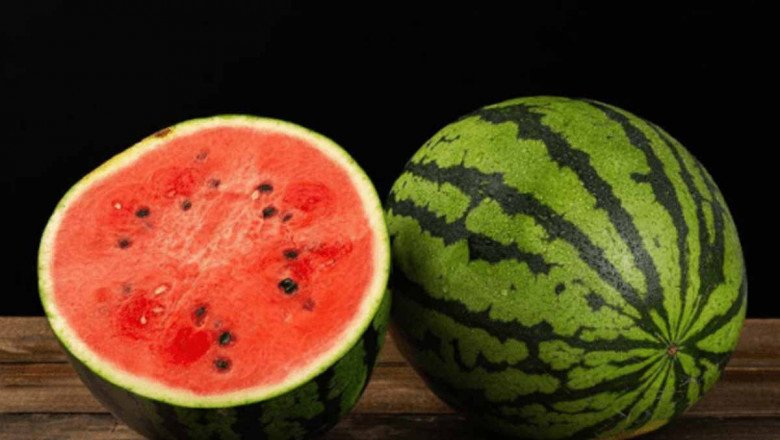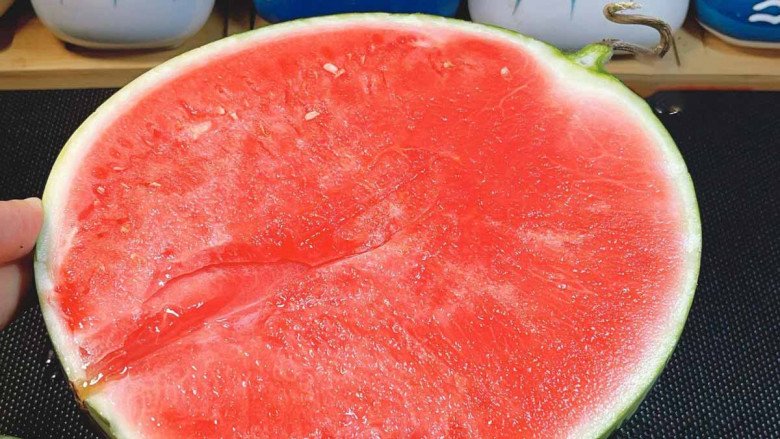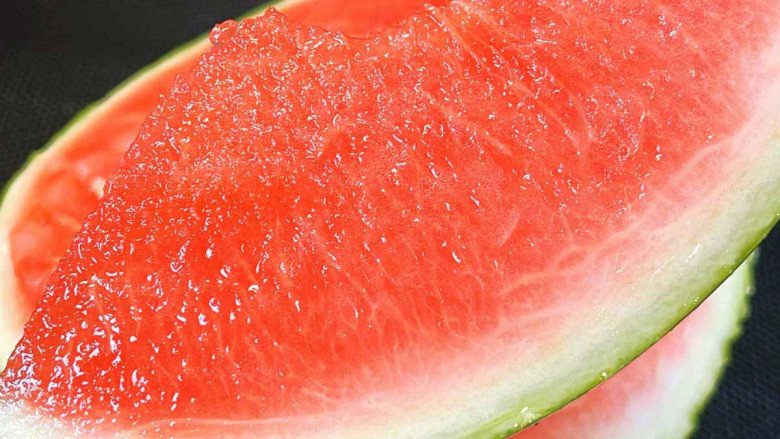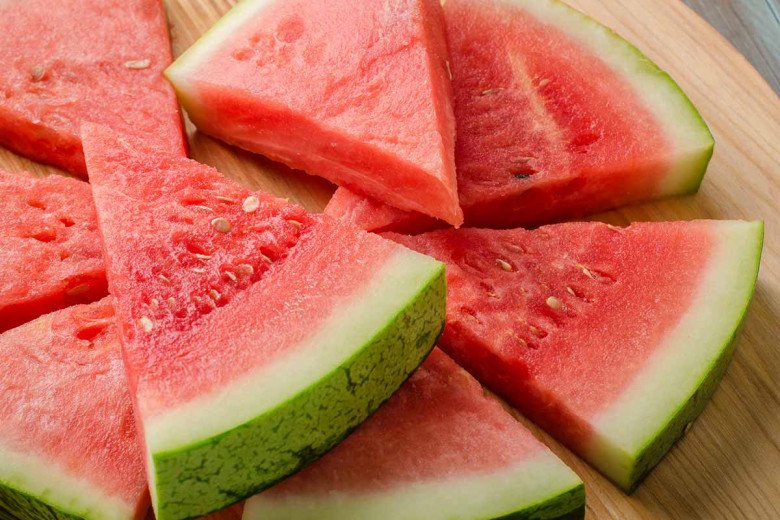
Have you ever tried cutting a watermelon, only to have the flesh crack and split? This often happens with ripe, taut-skinned watermelons. While it doesn’t affect the taste, it can be unsightly. So, how can you prevent this from happening?
The reason for this cracking is the high internal pressure within the watermelon. A slight force can cause the flesh to rupture. To avoid this, you can use a pair of chopsticks.

Locate the small circular indentation at the bottom of the watermelon. Gently pierce this spot with a chopstick, twist, and then remove it. This simple action will relieve the internal pressure and allow you to cut the watermelon without any cracks forming.

Why does this work? By creating a small hole with the chopstick, you’re releasing the built-up pressure inside the watermelon. With reduced internal pressure, you can cut the watermelon without any unsightly cracks.
Now, you can confidently cut and serve refreshing watermelon slices to your family. But what about the leftover watermelon? It’s important to know how to store it properly to maintain its freshness and nutritional value.
Many people make the mistake of storing watermelon in the refrigerator. This can introduce bacteria and is not ideal. Additionally, eating cold watermelon is not recommended, especially for those with a weak stomach.

How to Store Watermelon:
Ingredients:
– Watermelon: 1
– Plastic wrap
– Salt
– Cold water
Instructions:

1. Wrap the watermelon tightly with plastic wrap. This is crucial to prevent bacteria and odors from affecting the fruit.
2. Prepare a large bowl or container that can accommodate the watermelon. Fill it with cold water and add a spoonful of salt. Stir to dissolve the salt.
3. Submerge the wrapped watermelon in the salted water. Keep the bowl in a cool, clean place, and change the water daily. This method will keep the watermelon fresh for up to a week without dehydration, spoilage, or bacterial growth.

4. When you’re ready to eat, remove the watermelon from the wrap and cut as usual. Repeat the preservation process for any remaining watermelon.
Watermelons are susceptible to bacteria on their surfaces. By soaking it in salted water, you inhibit bacterial growth and keep the fruit fresh and safe to consume.
Tips for Enjoying Watermelon:
1. Watermelon can irritate the stomach and cause digestive issues, so consume in moderation.
2. Eat watermelons soon after purchasing. You can store it in the fridge, but no longer than 2 hours.

3. Avoid eating watermelon right before or after a meal. It’s best to consume it 2 hours after a meal.
4. Watermelon has cooling properties, so those with weak digestion should avoid excessive consumption to prevent stomach discomfort, diarrhea, and digestive issues.
5. Don’t keep watermelon for too long, especially during summer. High temperatures facilitate bacterial growth, which can cause digestive issues if consumed.
The Secret to Keeping Coriander Fresh All Year Round
Introducing the ultimate guide to keeping your cilantro fresh and vibrant for up to a year! Say goodbye to wilted, rotten herbs and hello to a vibrant, flavorful addition to your meals. With the tips and tricks from seasoned chefs, you’ll be able to transform your culinary creations and elevate your dishes to new heights. Learn the secrets to prolonging the lifespan of this delicate herb and enjoy its aromatic flavors all year round.
The Secret to Keeping Pork Fresh: Don’t Refrigerate, Try This Marinade Instead
For years, there has been a common misconception that freezing pork directly will result in tough and dry meat. However, a seasoned chef has revealed a secret technique that guarantees fresh and tender pork every time. Unveil the mystery behind this age-old trick and discover the key to unlocking the true potential of your pork dishes.
“Pork Rinse: A Clean and Tasty Transformation”
Introducing: The Ultimate Guide to Safe Pork Handling and Preparation.
You’ve probably heard the age-old advice to always wash your pork before cooking it. But did you know that this common practice could actually be doing more harm than good? It’s time to unravel the truth and discover the right way to handle and prepare pork.
Stay tuned for a comprehensive guide that will transform the way you think about pork preparation. From understanding the risks associated with improper handling to mastering the art of safe and delicious cooking, we’ll cover everything you need to know to become a pork-prep pro.






































